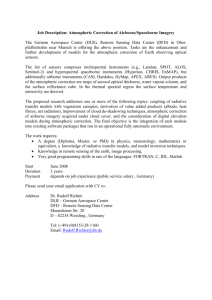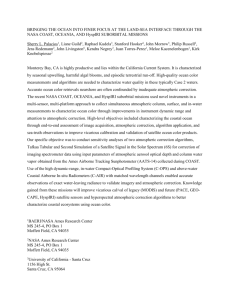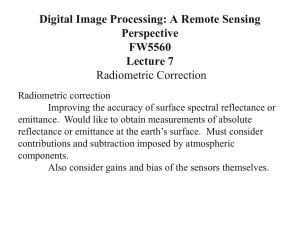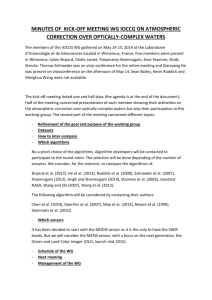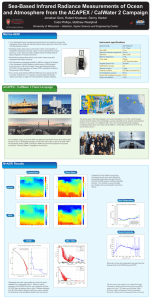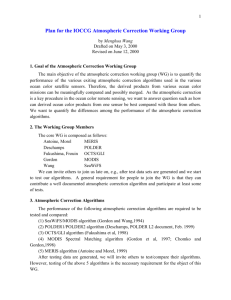atmospheric correction for aerosols and
advertisement
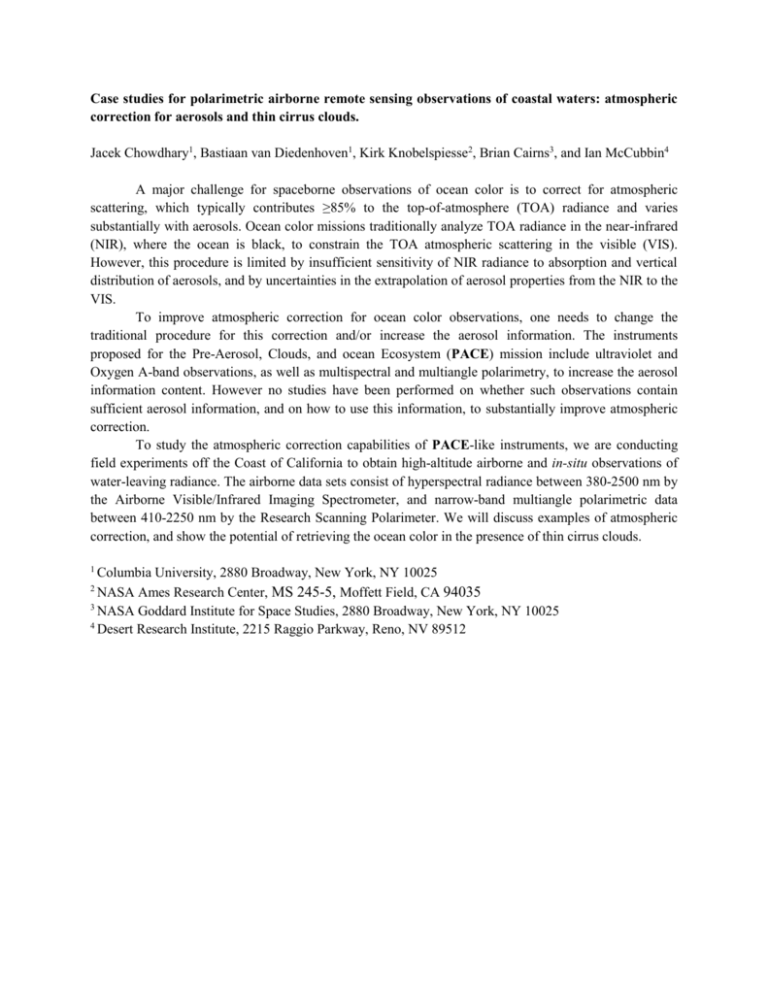
Case studies for polarimetric airborne remote sensing observations of coastal waters: atmospheric correction for aerosols and thin cirrus clouds. Jacek Chowdhary1, Bastiaan van Diedenhoven1, Kirk Knobelspiesse2, Brian Cairns3, and Ian McCubbin4 A major challenge for spaceborne observations of ocean color is to correct for atmospheric scattering, which typically contributes ≥85% to the top-of-atmosphere (TOA) radiance and varies substantially with aerosols. Ocean color missions traditionally analyze TOA radiance in the near-infrared (NIR), where the ocean is black, to constrain the TOA atmospheric scattering in the visible (VIS). However, this procedure is limited by insufficient sensitivity of NIR radiance to absorption and vertical distribution of aerosols, and by uncertainties in the extrapolation of aerosol properties from the NIR to the VIS. To improve atmospheric correction for ocean color observations, one needs to change the traditional procedure for this correction and/or increase the aerosol information. The instruments proposed for the Pre-Aerosol, Clouds, and ocean Ecosystem (PACE) mission include ultraviolet and Oxygen A-band observations, as well as multispectral and multiangle polarimetry, to increase the aerosol information content. However no studies have been performed on whether such observations contain sufficient aerosol information, and on how to use this information, to substantially improve atmospheric correction. To study the atmospheric correction capabilities of PACE-like instruments, we are conducting field experiments off the Coast of California to obtain high-altitude airborne and in-situ observations of water-leaving radiance. The airborne data sets consist of hyperspectral radiance between 380-2500 nm by the Airborne Visible/Infrared Imaging Spectrometer, and narrow-band multiangle polarimetric data between 410-2250 nm by the Research Scanning Polarimeter. We will discuss examples of atmospheric correction, and show the potential of retrieving the ocean color in the presence of thin cirrus clouds. 1 Columbia University, 2880 Broadway, New York, NY 10025 NASA Ames Research Center, MS 245-5, Moffett Field, CA 94035 3 NASA Goddard Institute for Space Studies, 2880 Broadway, New York, NY 10025 4 Desert Research Institute, 2215 Raggio Parkway, Reno, NV 89512 2 Authors: Jacek Chowdhary Bastiaan van Diedenhoven Kirk Knobelspiesse Brian Cairns Ian McCubbin
